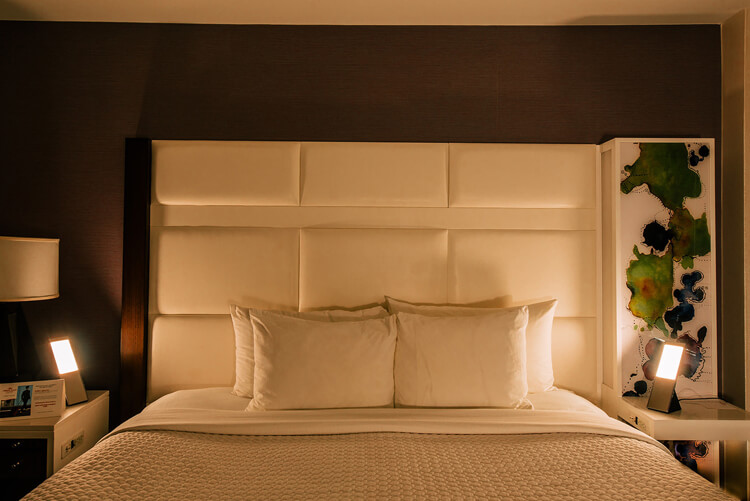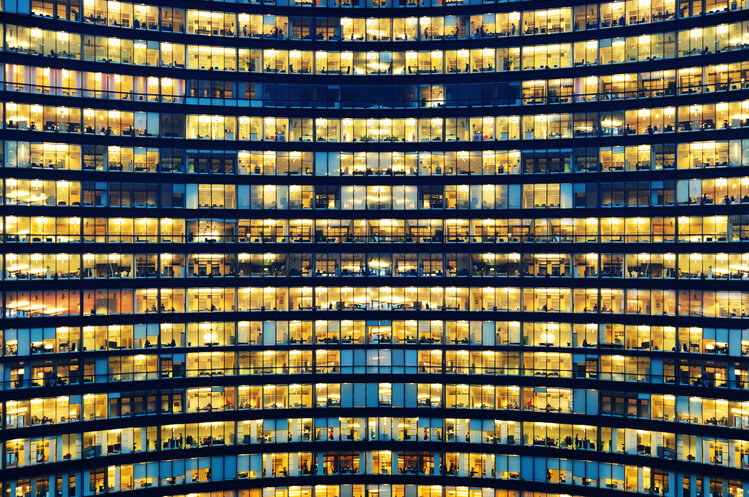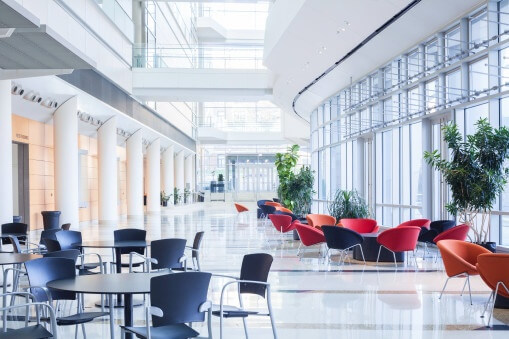Home > Industry News
With advanced LED development and improved data transmitting technologies, commercial lighting is going beyond illumination. Osram proposed some commercial lighting trends addressing the well-being of users and optimized space utilization for efficient energy usage.
Occupant Health and Wellbeing Takes Center Stage
The first thing Osram mentioned is human centric lighting. Building owners and facility managers are incorporating Tunable White technology as part of their lighting strategy. Tunable White technology is designed for Human Centric Lighting (HCL) applications that enable LED lighting to mimic natural lighting following the circadian rhythm to balance the visual, emotional and biological needs of humans.
Surveys and studies have indicated that suitable lighting can improve concentration and boost energy for users. A Danish primary school adopted human-centric-based dynamic lighting solutions to increase student attention and counteract their fatigue. InterContinental Hotels Group also worked with Healthe by Lighting Science to pilot using of circadian light for improving sleeping quality for its clients.

(Image: IHG)
Lighting Systems - the Tech Infrastructure for IoT
Intelligent IoT infrastructure in buildings integrating sensors and lighting is on its way to industry adoption. Osram suggested that we may soon see building owners leverage lighting systems as the data network infrastructure for smart building applications.
Smart building IoT applications require data collected from a network of sensors. A connected lighting system adopting wireless sensor network provide real-time data about a space including light, temperature, occupant activity and levels of volatile organic compounds (VOCs). This data is then gathered and processed by the lighting system manager or software developers to build up applications for monitor and optimize the space.

(Image: Osram)
The industry has been accelerating these developments. Recently, Taiwan-based power management specialist Delta has acquired US LED company Amerlux for developing IoT-based green solution for smart buildings and cities.
Space-as-a-Service Enters Sharing Economy
Working space has joined the field of sharing economy with the new concept of “Space-as-a-Service.” It means that space is now procured and a workplace, however procured, provides space and services appropriate for jobs to be done.
The foundation of a space-as-a-service platform is the ability to reconfigure space on demand, and lighting plays an integral role. A networked lighting system with integrated sensors and individually-controlled luminaires can be reconfigured to support specific jobs and occupant preferences quickly via software. As the job landscape changes, a lighting system can support those changes.
Apart from human centric lighting, IoT smart lighting system and “space-as-a-service,” what are other trends of commercial lighting in 2019? Let’s move on to see what Osram suggested.
Optimum Space Utilization Enabled by Lighting System Data
How to efficiently manage the space usage is critical to companies. In the past, place planning has been based on calculations using industry-standard formulas, software that addressed some of an organization’s requirements, or even a manual process. This process could take a while and is less flexible.
Nevertheless, data-driven space optimization applications have been ushered into the commercial real estate industry as a sought-after Smart building IoT application. More companies will leverage a workspace analytics SaaS (Software as a Service) business model to optimize their space. The application will be enabled by data from the networked lighting system.
Osram has partnered with Rifiniti, who specialized in workplace analytics, to offer smart building IoT solutions to the commercial real estate industry for improving operational efficiencies and occupant comfort.

(Image: Osram)
Green is Growing
Last but not the least; sustainability continues to be the focus for people, as well as for property owners. Osram indicated that investor momentum behind sustainable investments is growing driven by climate change, stringent building codes, and a strong interest from tenants in reducing the amount of energy used.
LED lighting and control strategies play a significant role in ‘going green’. Using lighting control strategies, occupancy sensors, and reduced lighting plug load supports ‘green’ initiatives by reducing overall energy consumption. Control strategies such as daylight harvesting bring natural light to the building interior reducing the need for artificial lighting. Sensors in every luminaire collect occupancy data and feed it to Building Management Systems (BMS) which in turn regulate air conditioning depending on occupancy. Dimming lights during high peak periods in the electric grid reduces plug load and lowers utility costs while still providing effective light levels for occupants.
Keywords:
SMT Reflow Oven, Lead free Reflow Oven, Reflow Oven Manufacturer, LED reflow oven, PCB Reflow Oven, Nitrogen Reflow Oven, Dual Rail Reflow Oven, China Reflow Oven, wave soldering machine, Dual Rail Wave Soldering Machine, Nitrogen Wave Soldering Machine, Wave Soldering Machine Manufacturer.




Contact: Mr Tommy
Phone: +86 13691605420
Tel: +86 -755-85225569
Email: tommy@flason-smt.com
Add: 94#,Guangtian Road,Songgang Street,Bao an District Shenzhen China